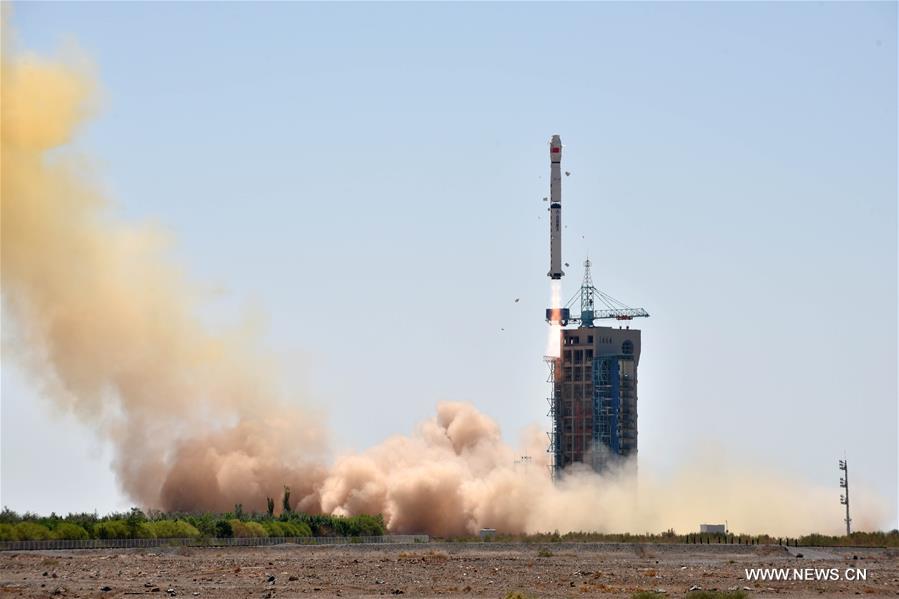
A Long March-4B rocket carrying X-ray space telescope to observe black holes, pulsars and gamma-ray bursts blasts off from Jiuquan Satellite Launch Center in northwest China's Gobi Desert, June 15, 2017. (Xinhua/Zhen Zhe)
JIUQUAN, June 15 (Xinhua) -- China launched its first X-ray space telescope to observe black holes, pulsars and gamma-ray bursts, via a Long March-4B rocket from Jiuquan Satellite Launch Center in northwest China's Gobi Desert at 11 a.m. Thursday.
The 2.5-tonne Hard X-ray Modulation Telescope (HXMT), dubbed Insight, was sent into an orbit of 550 kilometers above the earth to help scientists better understand the evolution of black holes, and the strong magnetic fields and the interiors of pulsars.
Through the telescope, scientists will also study how to use pulsars for spacecraft navigation, and search for gamma-ray bursts corresponding to gravitational waves.
The result of the wisdom and efforts of several generations of Chinese scientists, Insight is expected to push forward the development of space astronomy and improve space X-ray detection technology in China.
Insight can be regarded as a small observatory in space, as it carries a trio of detectors -- the high energy X-ray telescope (HE), the medium energy X-ray telescope (ME) and the low energy X-ray telescope (LE) -- that cover a broad energy band from 1 keV to 250 keV, said Lu Fangjun, chief designer of the payload.
Based on the demodulation technique first proposed by Li Tipei, an academician of the Chinese Academy of Sciences (CAS), in 1993, the HE has a total detection area of more than 5,000 square centimeters, the world's largest in its energy band.
"Given it has a larger detection area than other X-ray probes, HXMT can identify more features of known sources," said Xiong Shaolin, a scientist at the Institute of High Energy Physics of the CAS.
Chen Yong, chief designer of the LE, said X-rays of lower energy usually have more photons, so a telescope based on a focusing technique is not suitable for observing very bright objects emitting soft X-rays, as too many photons at a time will result in over-exposure.
But HXMT won't have that problem, as its collimators diffuse photons instead of focusing them. "No matter how bright the sources are, our telescope won't be blinded," said Chen.
According to Zhang Shuangnan, HXMT lead scientist, the satellite's developers found that a set of HXMT high-energy detectors, originally designed to shield background noises caused by unwanted particles, could be adjusted to observe gamma-ray bursts.
The creative new function pushes the satellite's observation band up to 3 MeV and a very good energy spectrum, Zhang said.















